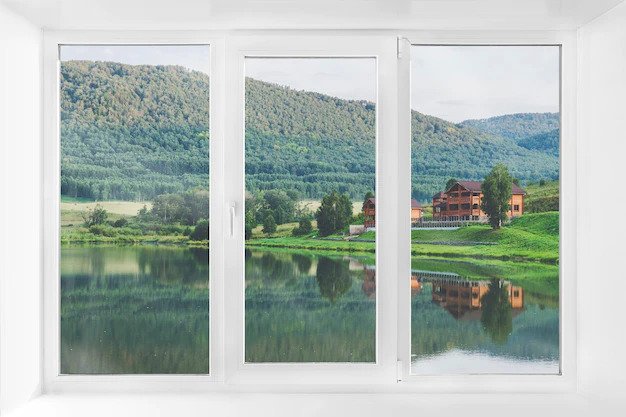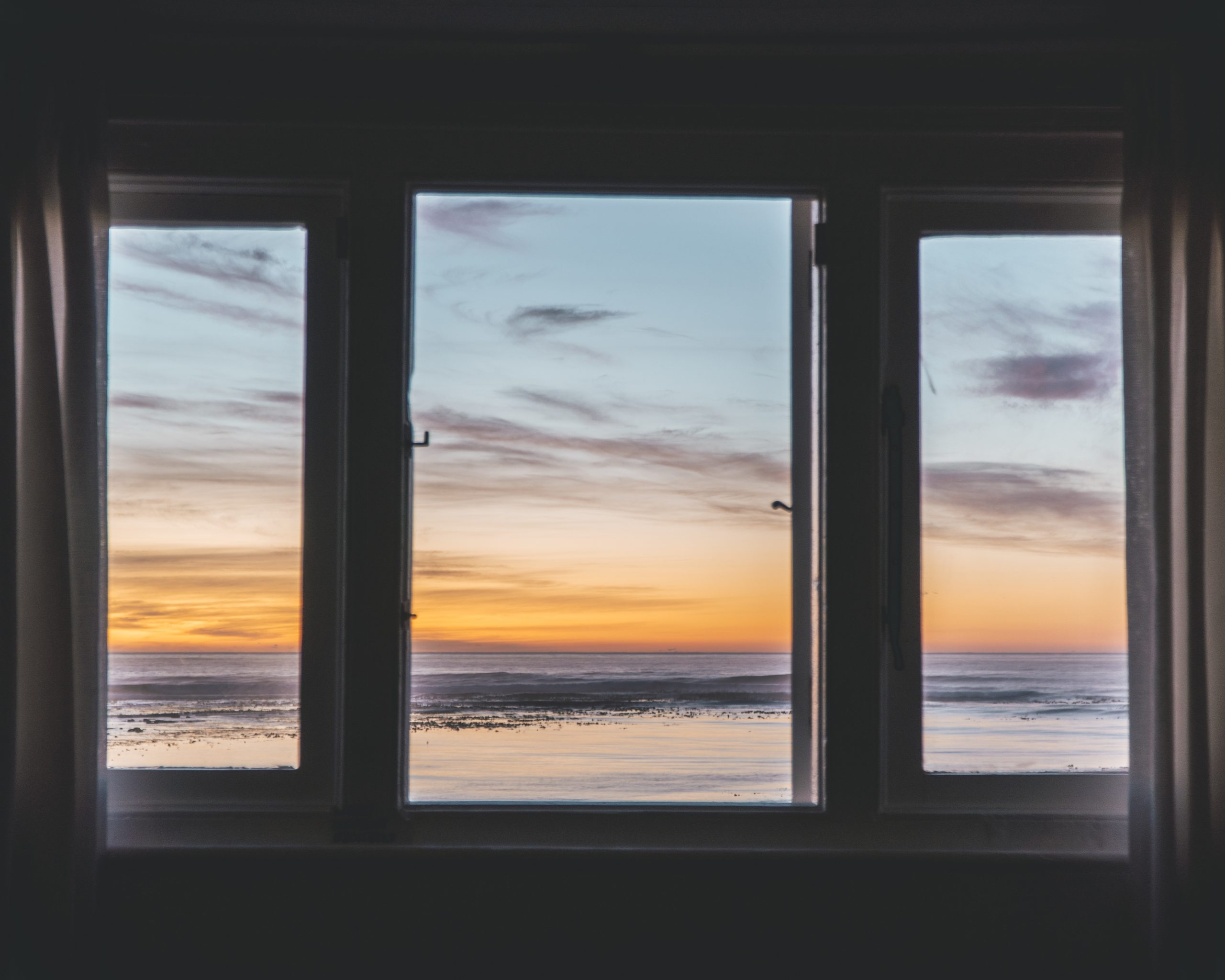How to Paint Glass Windows in 4 Steps- Best Paints for Glass
Are you the one who wants to see the glass windows more beautiful and fantastic? Well, painting glass windows is the best idea to make them more attractive. But the question that most people ask is how to paint glass windows.
Most people don’t know how to paint windows, specifically when it comes to learning about glass material.

Painting glass windows is a fun activity that most people perform to keep them busy apart from making their homes look best and outstanding. People also want to know how to paint window panes.
Reason to Paint Glass Windows
There are multiple reasons why people paint glass windows. Some focus more on aesthetic values, while others prefer professional values due to which windows look fine if the glass is even broken.
Here are some more reasons which highlight why it’s important to paint glass windows:

What Type of Paint to Use on Glass Windows?
There are many types of paints available for glass windows. It’s not easy to decide which type of window glass paint is best for a glass window. It depends upon where you are using this glass paint. Either you are using it for the room windows or the bathroom windows.
Here is a brief answer to the question “what paint to use on glass window?”.
Using latex or oil-based paint is not good for glass windows as it can’t work here. It does not stay for a long time on the glass and is easy to wash off or peel off. However, acrylic paint is a wonderful idea for glass windows if you want to make them more durable and shiny. Painting on glass windows with acrylics is also a good idea.
Most professionals suggest using acrylic enamel and glass paint at a time for professional purposes. Glass paint is available in the market, which is specifically open for painting the glass windows. Mix it with acrylic enamel and then paint the glass window 2-3 times for a short duration. In this way, paint becomes stronger and more permanent on the windows. This method is used for painting glass windows permanently.
If privacy is your priority, use something that never allows much light to cross windows and doors. For painting glass windows for privacy, frosted paint mixes well with acrylic paint and works best. Homemade window frosting can be done quite easily. In my experience, this paint dries quickly without any additional products that people use for drying, which is its additional advantage.
Most people want to use temporary paint on glass windows because they want to remove it after some time. Tempera paint is one of the ideal and top-recommended paints. It is available in different colors and offers the best results compared to many other dyes with high prices. The overall texture and ability to adhere to a glass of this paint are good enough.
Steps in Painting Glass Windows
Step 1: Clean Your Windows
Firstly, you need to clean your glass windows using soap and warm water. Cleaning windows is important before painting because windows are mostly exposed to dirt and different stains. Cleaning them removes all the dirt and stains. If the window is not cleaned before painting, the dust particles on the window’s surface become visible underneath the paint coating, and the final painting results are not good and shiny enough.
Also, if there are some oil or other stains on the window’s surface, the paint might not form a smooth layer and stick properly to the window surface, causing the paint quality to drop. Soap removes the stains, and warm water helps in removing oil.
Step 2: Preparing the Window Surface
If you don’t anticipate painting an obscure base coat before framing your sketch, consider this step for making an expert-looking sketch: join a stencil to the backside of the glass and follow the sketch utilizing a marker or liner paint.
Assuming you are making a sketch, this is the ideal opportunity to frame that sketch onto the base coat or the uncovered glass on the off chance that you’ve picked not to utilize a base coat.
When the base coat is dry, cautiously draw the blueprint for your sketch onto the base coat. Once more, ensure you wear plastic gloves while doing this errand, as oils from any source, including your hands, will oppose the paint. If you want to get a darker shade, you can add a layer of gassetto to your base coat before painting.
Likewise, ensure the surface is completely dry with a base coat before applying the paint layer. Permit the base coat to dry for an hour to keep the paints from draining together while adding the topcoat. You might wish to apply a base coat for creative artwork, which will act as a foundation for your sketch.
As you prepare the surface with paint, it is important to wear a few plastic gloves to prevent oil from getting into your hands. You can utilize a typical marker or a paint liner to achieve this undertaking. If you utilize paint liner, cautiously press it onto the bass coast to make your layout.
Apply an even coat utilizing a characteristic brush. You will have to hold on until the paint liner is dry before moving to the subsequent stage. This liner would incorporate the window outline and any pieces of glass that need to remain without paint.
If you have planned to finish a false stained-glass paint design, you will need to apply the fluid driving first. Because of its matte surface, gesso makes an incredible surface on which to paint. Outer paint must be dry.
Start by utilizing painter’s tape to cover the areas you would rather not be painted. This test indicates the time required for the paint to solidify completely. It is not important to stand by this long to add extra layers of paint.
Step 3: Applying the Paint
You will find this method easier if you use single-colored paint for a single coat. You may need to apply additional layers depending on the opaqueness of the window that you want.
Start painting from the opposite side of your strong hand. This hand orientation is necessary if you want to know how to draw glass windows as it permits users to draw and avoid blurring their design. Select your brush according to the size of your design.
When you become acclimated to the interaction, start adding more paint to your brush. Start by adding limited quantities of paint.
Work with each tone in turn, painting every one of the pieces of the plan that utilizes that tone before moving on to the following. Assuming you’re reusing the brush, try to wash the brush in water or clean it with paint remover completely.
You might have to splash the cloth with a little paint remover if you’re utilizing polish to eliminate any undesirable paint. Permit the brush to dry before starting with the following tone.
If you are applying to the enamel, you may need to soak the rag in light paint to remove any remaining paint. Once you’ve got it, start adding additional paint to your brush.
It is ideal to trust that the paint will dry between colors when time permits you to try not to blend tones unintentionally. By working with each tone in turn, paint all the plan components that apply that tone before continuing to the following. All other water-based paints take a lot of time to dry, while this paint takes a few minutes to dry. If enamel is thick, anywhere from 8 hours to a day can be consumed for the drying up of paint.
If the colors match, you should wait for each coat to dry before applying the next one to avoid bleeding. It is very difficult, but it is impossible to stop unintentional bleeding at first, so be patient! If you are experiencing this problem, apply a second coat on the drying of the first coat. Continue this way until the design is complete.
Step 4: Allow Paint to Fix and Dry
Baking glass painted with paint in a broiler is the ideal strategy for restoring and is regularly utilized for expressions and specialties glass-painting projects. Relieving the glass is a significant stage as most paints require as long as a week or considerably more to solidify completely.
While some propose utilizing a hairdryer to achieve a similar result, a hairdryer doesn’t make sufficient intensity to make this a practical choice. Until the paint is completely solidified, It is vulnerable to chips and stripping.
Acrylic paint can require as much as a month to fix completely. During this holding-up time, It is ideal to forgo contacting the window and keep it safeguarded from water.
Best Paint For Glass Windows- What Paint To Use On Glass Windows?
Here are some best paints for glass windows that are good, unique, and budget-friendly.
Liquid Chalk Markers & Metallic Colors
Most people want to paint glass windows but don’t want to use a brush or extra accessory. So, they ask “Will chalk paint stick to glass?”. The answer is yes.
This chalk marker with a metallic color is an excellent choice. It is available easily in the market with a lot of color options.
It is useful due to its low price and Neon colors. Whether you want to make your kids happy while keeping them busy with painting or if you’re going to paint your windows professionally, this is always a great choice for all.
Colorations Simply Washable Tempera Paints
As the name suggests, this paint is available for temporary color paintings. With 11 sets of bright colors, this tempera paint provides fabulous results, which makes your windows protective and ensures durability.
The paint has a good texture and adheres to power with windows and walls. Moreover, it is available at reasonable rates, which is another reason you should use it for a lot of painting work.
What Type of Paint Brush Should I Use for Glass Windows?
Most people make a mistake, and they use a brush available for glass windows which is such wrong conduct. Such types of painting meetings are not good to read enough.
There are two types of brushes famous for glass windows. These are synthetic and natural brushes. These are good and fantastic enough to perform a smooth painting job on the glass. It does not matter which type of brush you are using.
However, make sure to buy and use a high-quality brush. Most expensive brushes are good in quality and are durable. Selecting a brush for glass window painting is even more important than choosing paint. So, be wise and spend more. Hence, painting on glass windows becomes easy for everyone.
Conclusion- Painting the Glass Windows
Above is complete detail on how to paint glass windows. I highly recommend following the steps gradually and following the guidelines. Make sure to select the paint and brush of high quality as both of the products matter a lot for quality glass window painting.

